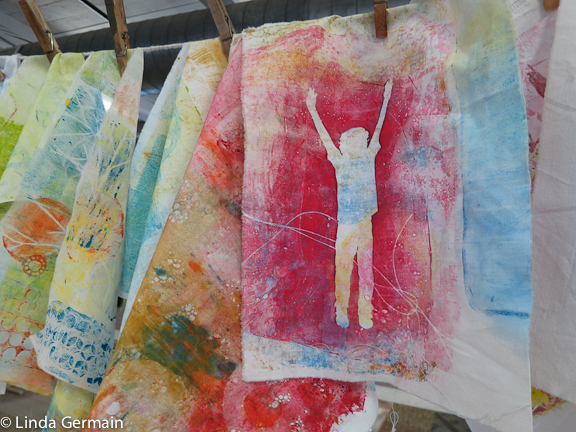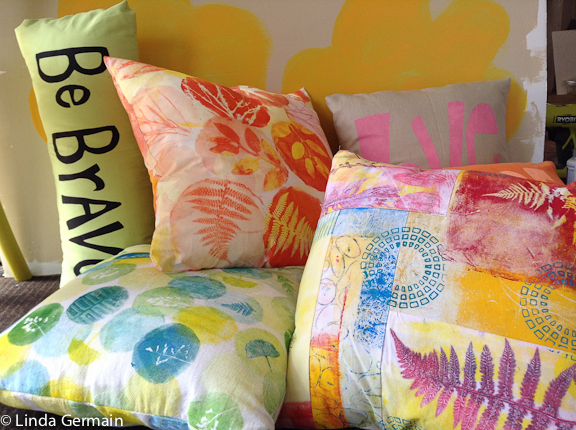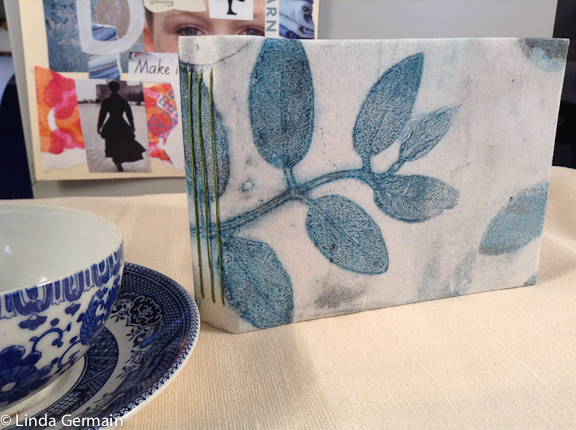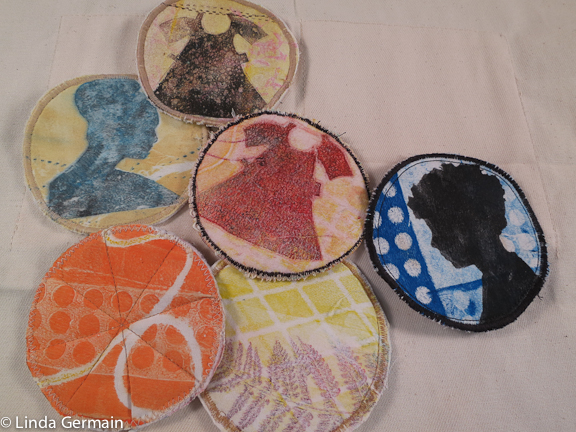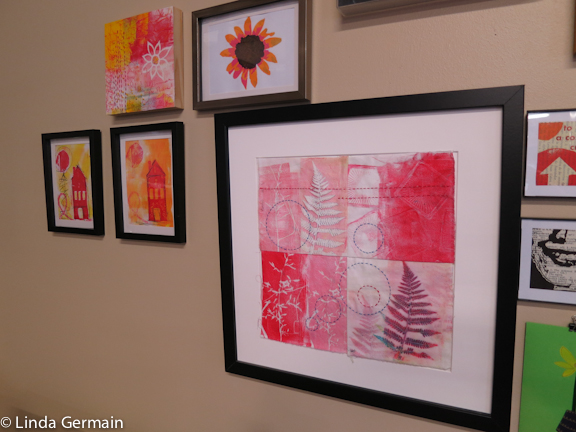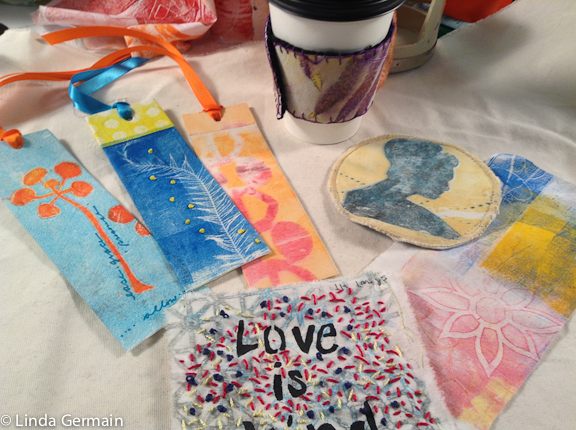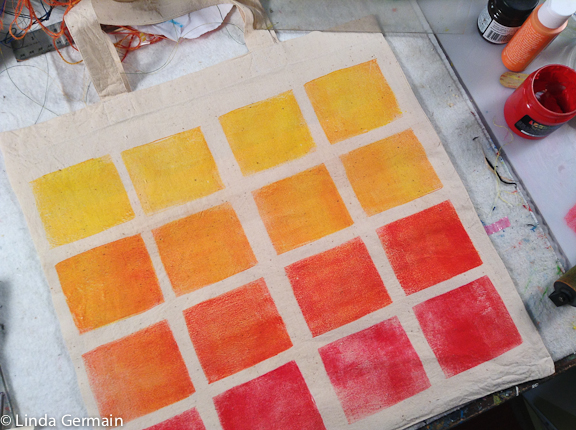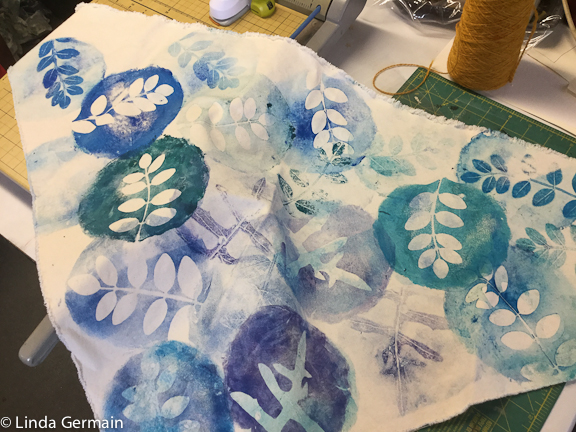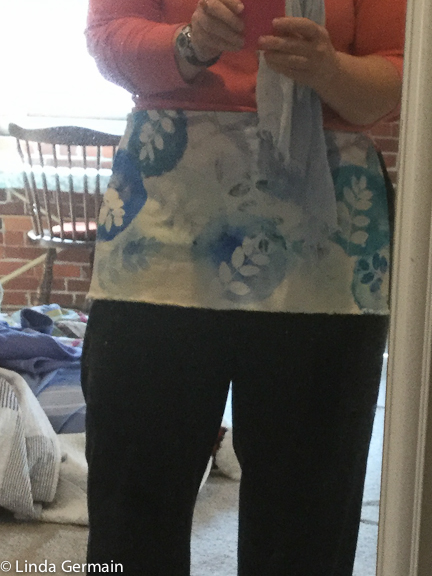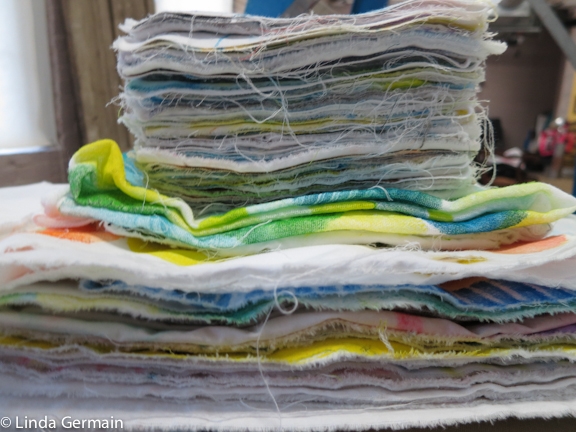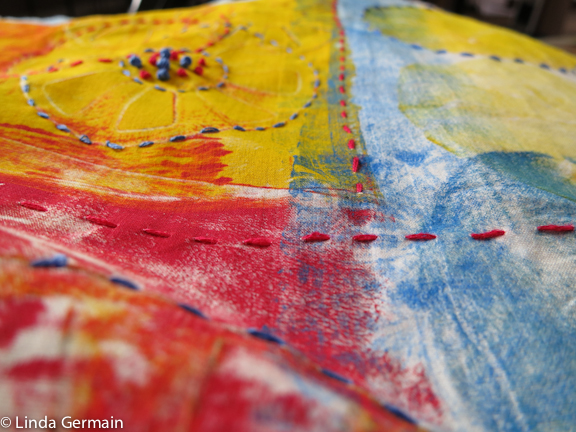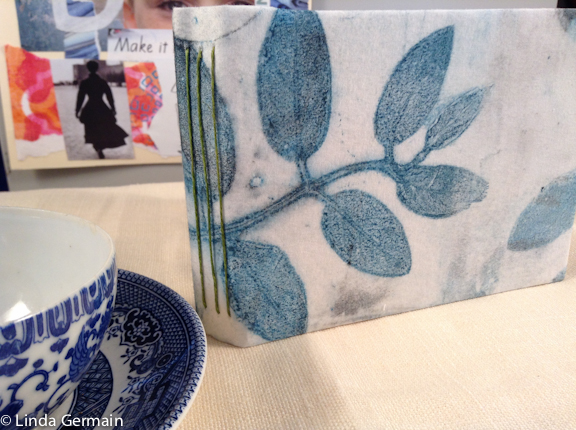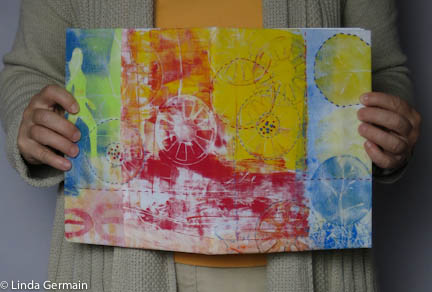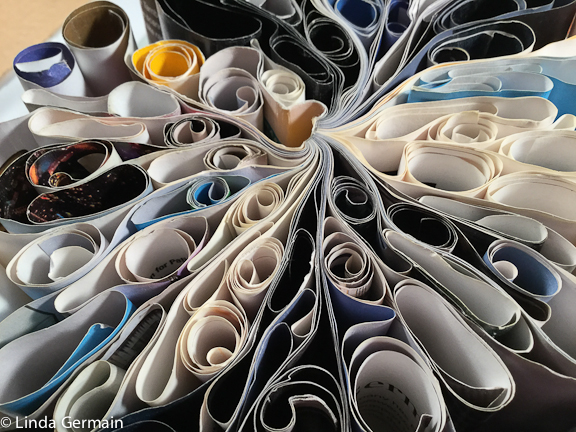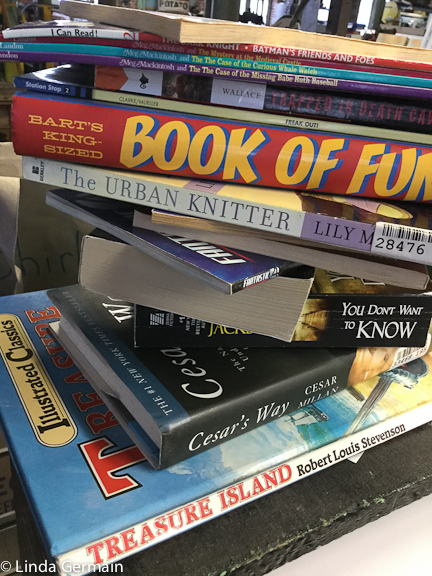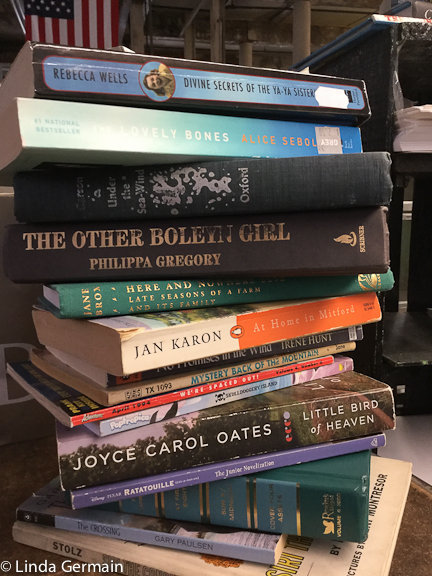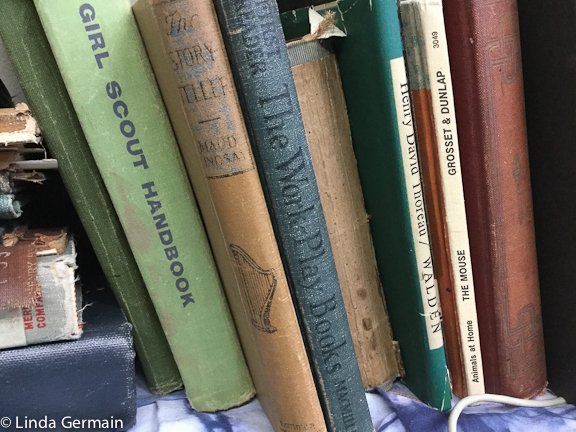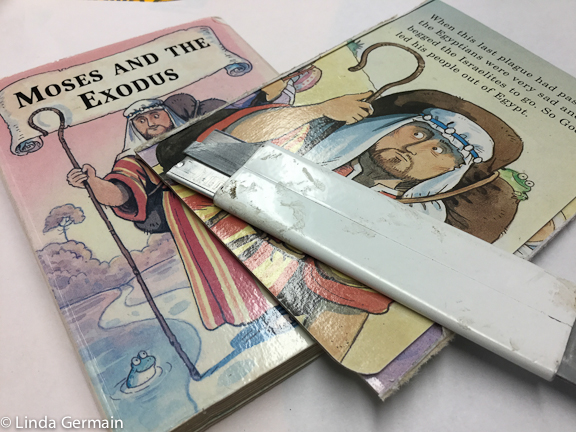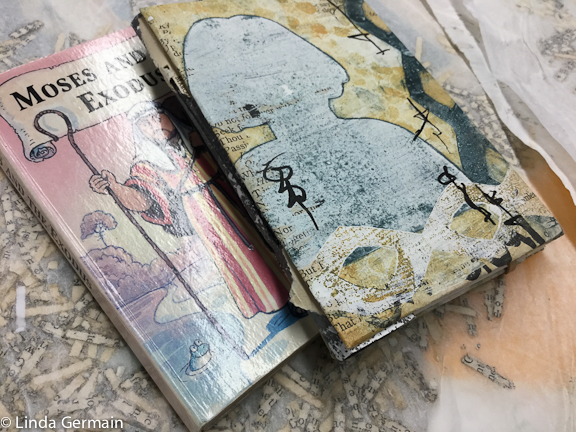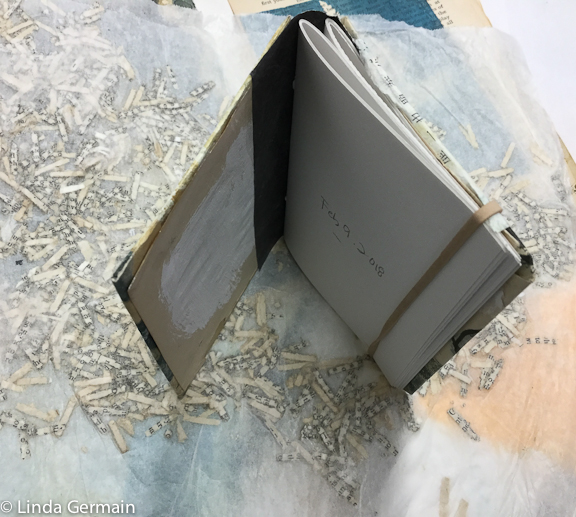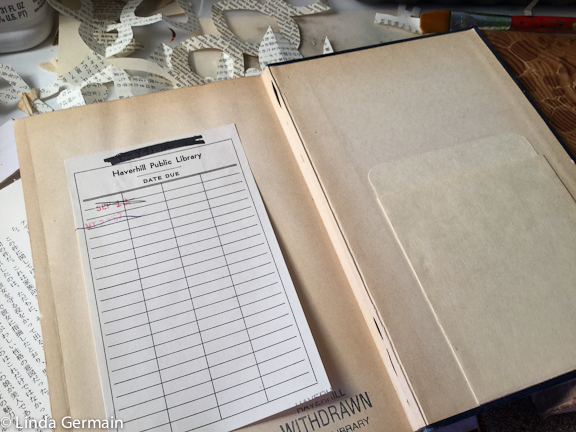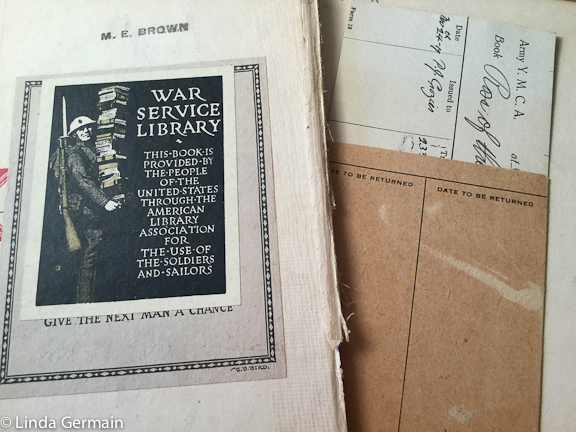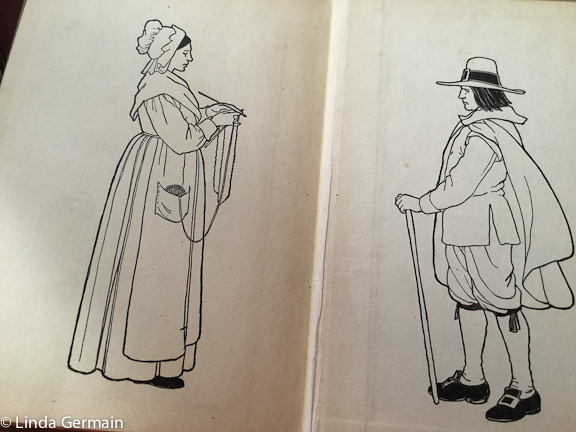What can you do with Monoprinted Fabric?
I love making gelatin printed fabric. So you can imagine that I have a big pile of fabric for projects.
I must confess that I like creating the patterned and printed fabric more than completing projects. I love the unpredictable layering process of monoprinting fabric with the gelatin plate.
Some ways that I have used the hand printed fabric:
Pillows made with gelatin printed fabric
Book cover made with monoprinted fabric
Coasters made with gelatin printed fabric
I have pieced gelatin printed fabric and then added hand sewing and matted and framed the art work. I also mounted some fabric prints on to wooden blocks.
Book marks, a coffee cover and quilting squares.
This tote bag was really fun to print with a tiny piece of gelatin.
This was an odd shaped remnant that I trimmed and made a small apron for the studio.
So you can do almost anything you would do with commercially printed fabric, with your monoprinted fabric. There are some factors to consider:
- Washability will depend on the ink or paint that you use
- Smooth hand again depends on the inks and how many layers you use.
- Perfect repetition should not be the goal when working with the gelatin plate
- Fluid and abstract marks are often easier to obtain with the gelatin plate
- Small pieces of fabric are easier to work with, so consider projects that can be pieced together after printing.
If you would like to explore Monoprinting Fabric with the gelatin plate, then check out the details of the Monoprint fabric workshop. Read the details here.
Other fabric projects that I am considering:
- Stretchy headband
- Pieced wall hanging
- Tea Towel
Got any great uses for your hand printed fabric???
What can you do with Monoprinted Fabric? Read More »
